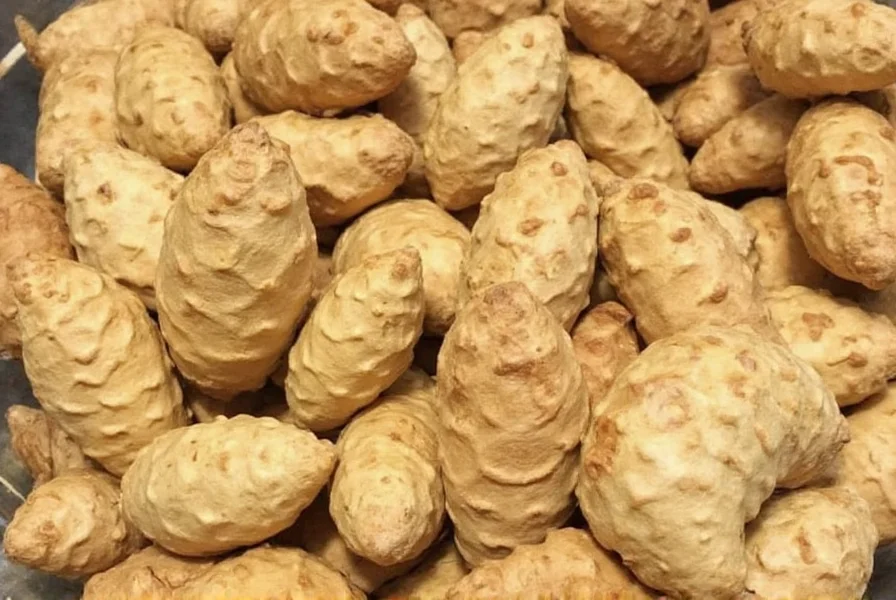Pine cone ginger, scientifically classified as Zingiber zerumbet, stands as one of nature's most fascinating botanical specimens in the Zingiberaceae family. This perennial herbaceous plant reaches heights of 3-6 feet and produces striking 4-6 inch cone-shaped inflorescences that transition from green to pinkish-red as they mature. What makes this plant particularly remarkable is the clear, fragrant liquid that oozes from the cones when squeezed—a property that earned it the common name "shampoo ginger" in Hawaiian culture.
Botanical Characteristics and Identification
Understanding the physical attributes of pine cone ginger helps distinguish it from other ginger varieties. The plant features:
- Large, lance-shaped leaves growing up to 20 inches long
- Distinctive cone-shaped inflorescences that develop at the top of the flowering stem
- Rhizomes with a pale yellow interior, less fibrous than common ginger
- A unique fragrance profile combining citrus, floral, and spicy notes
| Characteristic | Pine Cone Ginger (Zingiber zerumbet) | Common Ginger (Zingiber officinale) |
|---|---|---|
| Primary Use | Ornamental, traditional medicine | Culinary, medicinal |
| Rhizome Flavor | Milder, less pungent | Strongly pungent, spicy |
| Flower Structure | Prominent cone-shaped inflorescence | Less conspicuous flowers |
| Native Region | Southeast Asia | Southern Asia |
Natural Habitat and Cultivation Requirements
Native to the tropical regions of Southeast Asia, pine cone ginger thrives in USDA hardiness zones 8-11. Successful cultivation requires specific conditions that mimic its natural environment:
- Soil: Rich, well-draining soil with high organic matter content
- Light: Partial shade to full sun (morning sun with afternoon shade ideal)
- Water: Consistent moisture without waterlogging
- Temperature: Minimum 50°F (10°C), optimal between 70-85°F (21-29°C)
Gardeners in temperate climates can grow pine cone ginger as an annual or in containers that move indoors during colder months. The plant typically flowers from late summer through fall, with the characteristic cones developing sequentially along the flowering stem.
Traditional and Contemporary Applications
For centuries, indigenous cultures across Southeast Asia and the Pacific Islands have utilized pine cone ginger for various purposes. Traditional applications include:
- Topical treatments: The gel from mature cones applied to hair and skin for cleansing and fragrance
- Medicinal preparations: Rhizomes used in traditional medicine for digestive issues and inflammation
- Ceremonial uses: Incorporated into cultural rituals and offerings
Modern research has begun investigating the scientific basis for these traditional uses. Studies suggest that Zingiber zerumbet contains zerumbone, a bioactive compound with potential anti-inflammatory and antioxidant properties. However, researchers emphasize that more clinical studies are needed to confirm therapeutic applications for pine cone ginger benefits in human health.
Culinary Considerations and Safety
While pine cone ginger isn't commonly used in mainstream cooking like its cousin Zingiber officinale, certain culinary applications exist:
- The young shoots can be used similarly to asparagus in stir-fries
- Rhizomes may be incorporated into teas or tinctures in small quantities
- The fragrant gel occasionally serves as a natural flavoring agent
Important safety considerations include:
- Always properly identify the plant before consumption—misidentification could lead to consuming toxic species
- Use in moderation, as excessive consumption may cause digestive discomfort
- Consult healthcare providers before using for medicinal purposes, especially if pregnant, nursing, or taking medications
Environmental and Ecological Benefits
Beyond human applications, pine cone ginger offers significant ecological advantages in appropriate growing environments:
- Provides habitat for pollinators including bees and butterflies
- Acts as an effective ground cover that prevents soil erosion
- Requires minimal chemical inputs when grown in suitable conditions
- Contributes to biodiversity in tropical and subtropical landscapes
Gardeners seeking sustainable landscaping options often select pine cone ginger for its low maintenance requirements and ability to thrive without synthetic fertilizers or pesticides when established in proper conditions.
Preservation and Sustainability Considerations
As interest in traditional botanicals grows, sustainability becomes increasingly important. Responsible engagement with pine cone ginger includes:
- Supporting ethically sourced plants from reputable nurseries
- Avoiding wild harvesting that could deplete natural populations
- Practicing proper cultivation techniques to maintain plant health
- Respecting cultural traditions associated with the plant
Many botanical gardens and conservation organizations now cultivate Zingiber zerumbet as part of broader efforts to preserve tropical plant biodiversity and traditional knowledge systems.











 浙公网安备
33010002000092号
浙公网安备
33010002000092号 浙B2-20120091-4
浙B2-20120091-4